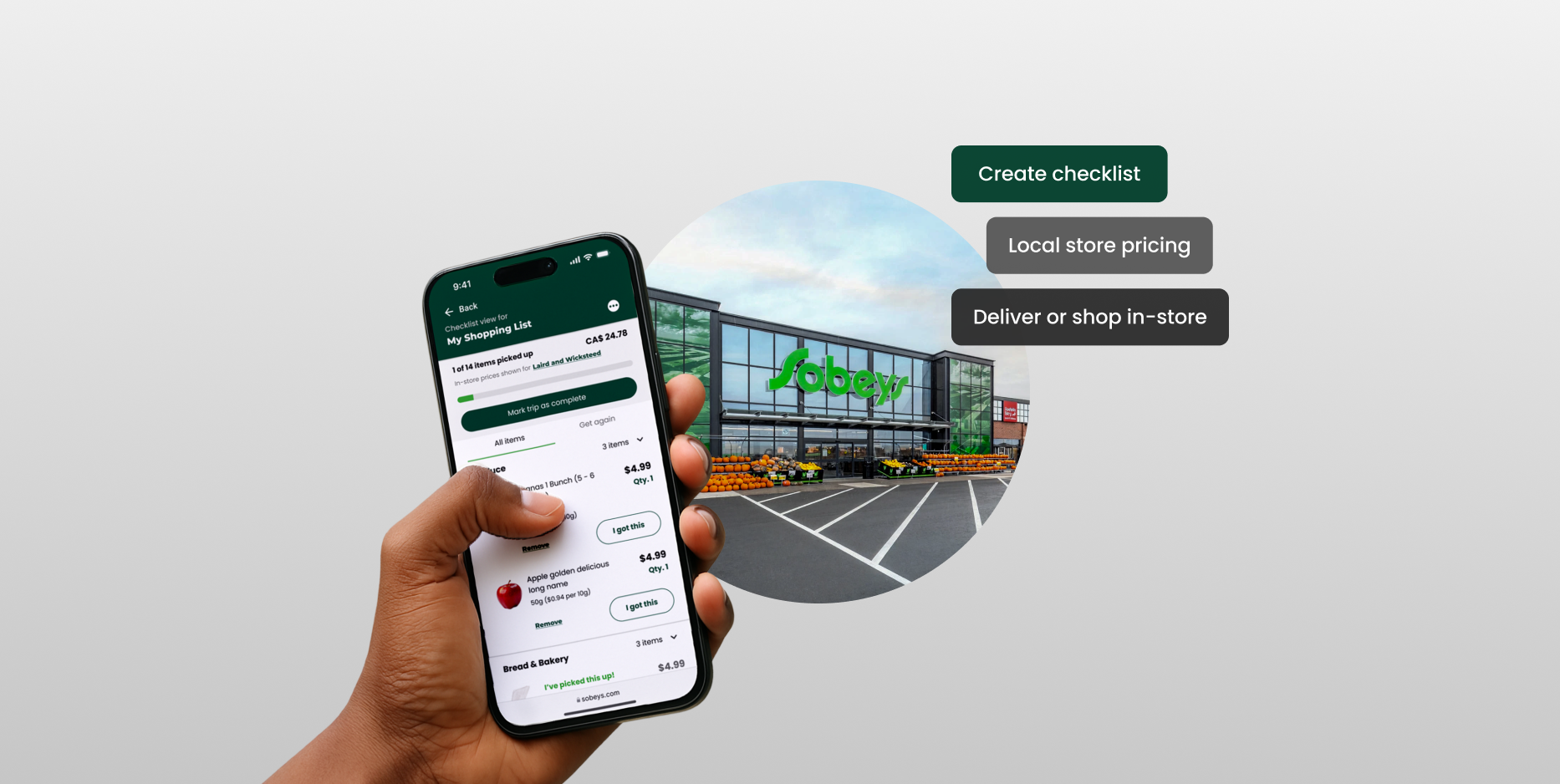This page contains only a high level view of this project. Please get in touch if you would like to learn more.
IBM led the overhaul of Sobeys’ website. As designers, our goal was to create a digital shopping list that allowed customers to compile items from their local store for in-store use. This served as an interim solution until Sobeys could implement a native e-commerce checkout function on their website.
Product lead,
UI/UX designers
Service designers
Sobeys marketing stakeholders
Adobe Experience Manager (AEM) teams
A companion tool for local in-store shopping
I created a shopping list companion that bridged digital browsing and physical shopping, helping Sobeys infer in-store purchases from customer interactions with the newly launched online catalog.
Sobeys' journey toward e-commerce adoption
Sobeys was revamping their website to catch-up with competitors. Their plan was to showcase products from within their local stores online. Currently, customers are redirected to Voilà to view and buy products.
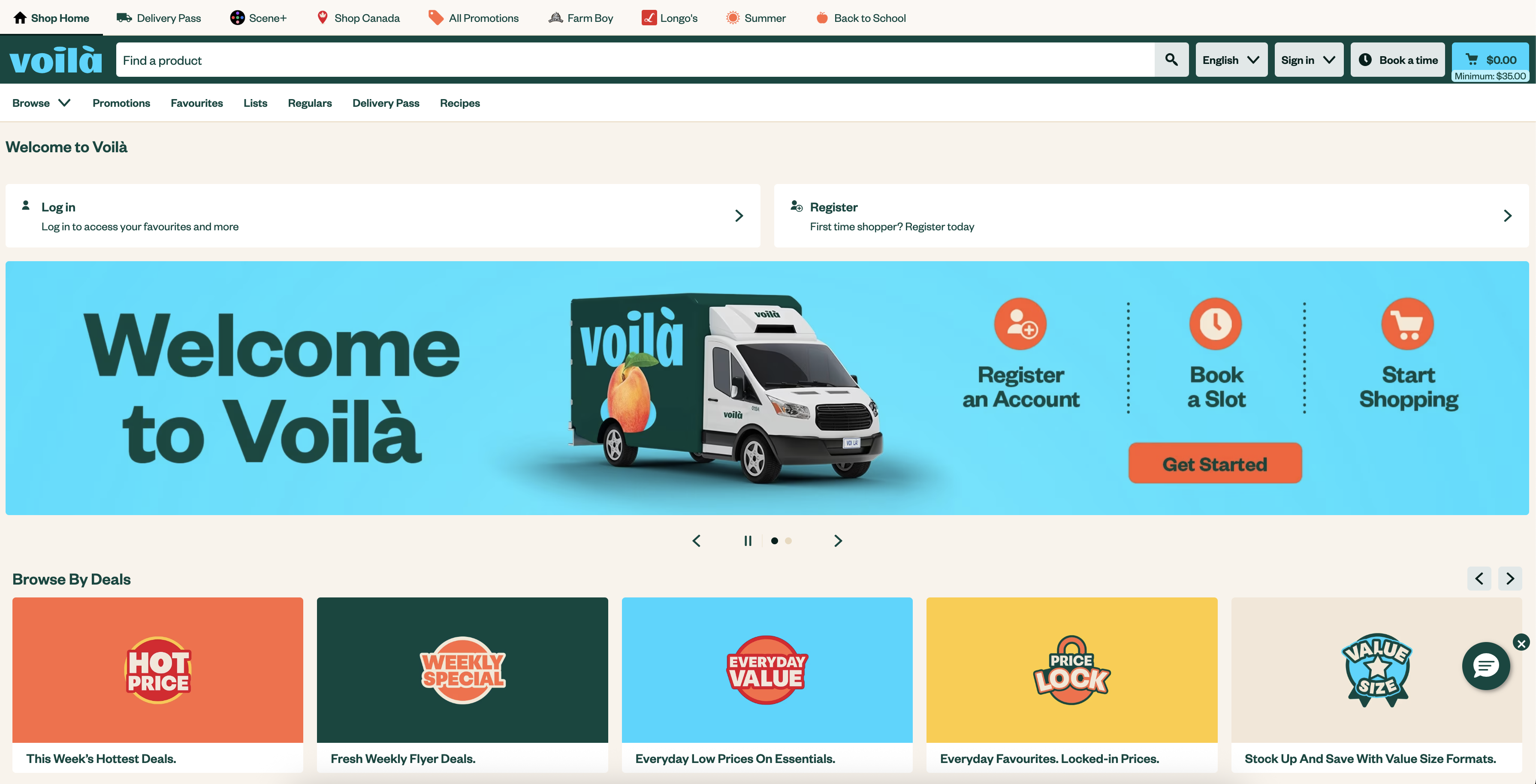
Users cannot directly checkout on Sobeys.com
Voilà, an online grocery delivery and pick-up platform, was Sobeys' initial entry to e-commerce in response to COVID-19. But there were challenges with Voilà:
A small percent of Sobeys' marketshare is from Voilà. Sobeys believed that redirecting customers to Voilà leads to user abandonment.
Customers were not incentivized to use Voilà because inventory and pricing were not representative of what was available at local stores.
Before Sobeys can implement their own online checkout, they must wait for their contract to end with the vendors who power Voilà.
Designing for a transitional period
How might we design an online shopping experience that empowers users to pick-up their groceries in-person?
As an interim solution, we saw potential in Sobeys list feature. Instead of a basic checklist that allowed users to manually enter text fields, we can allow users to compile specific products from the catalog.
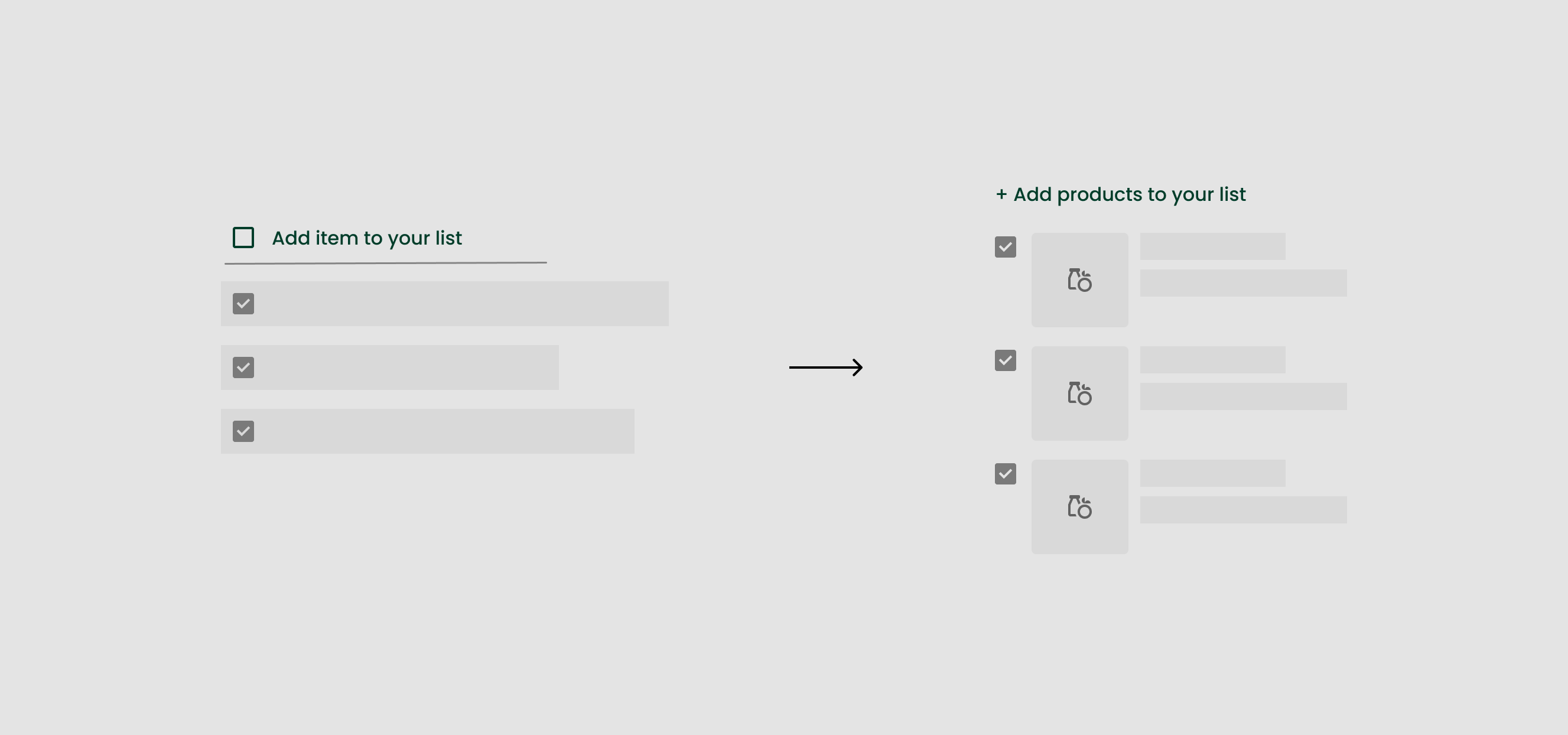
What would incentivize users to use Sobeys' list?
I carried out a contextual study with 20 individuals representing 3 personas of Sobeys customers.
Our team needed to understand based on real user needs what would incentivize shoppers to adopt this new digital list, especially since the existing feature saw low engagement.
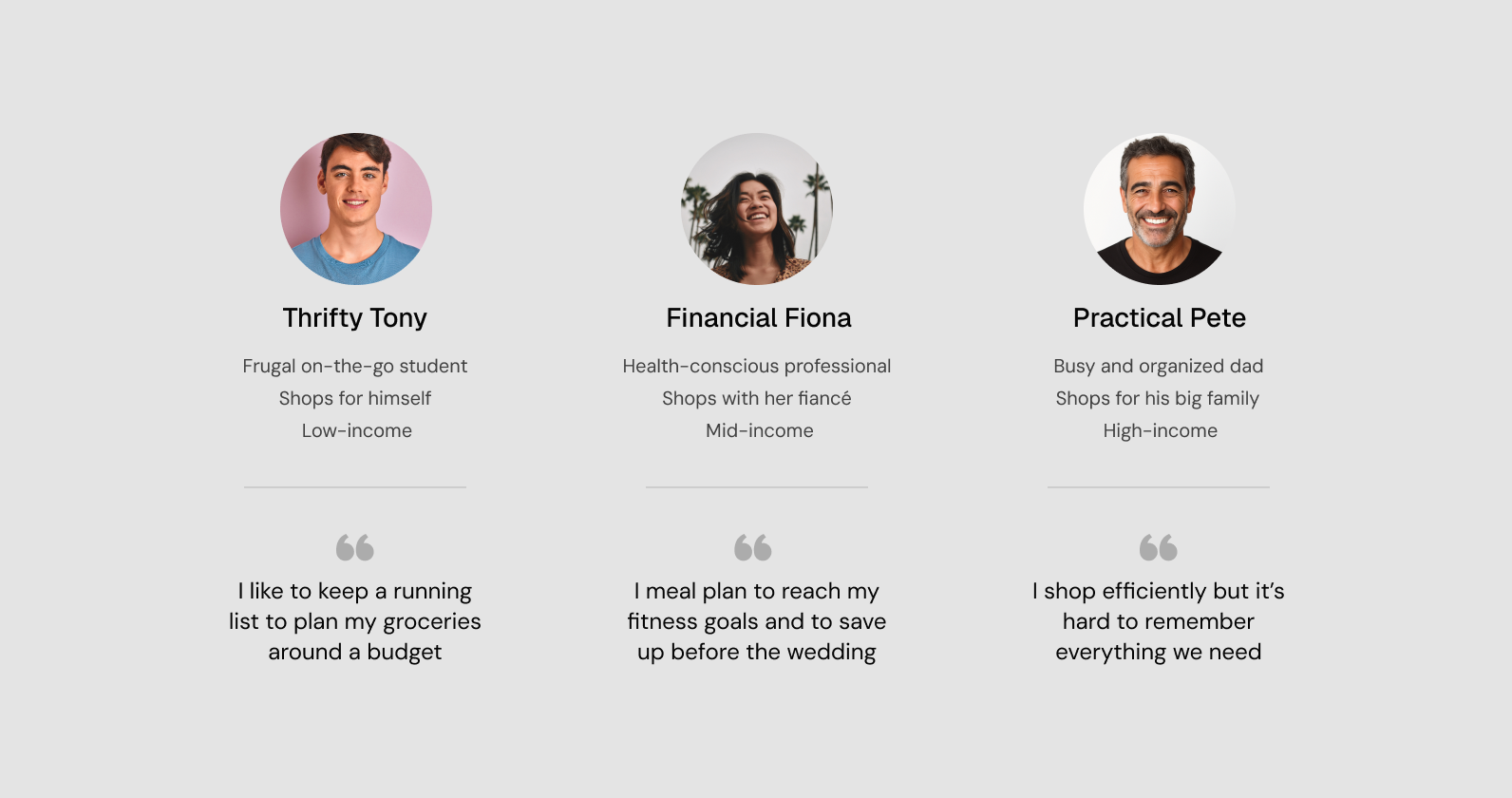
My hypothesis was correct—participants had their own system for building grocery lists, making it challenging to adopt a replacement.
This underscored the need to provide a differentiated experience.
Participants sometimes forgot to add items to their lists and only remembered to buy them when they came across them in-store.
Participants liked seeing online prices for products because they could calculate total grocery costs without cross-referencing flyers
Participants were frustrated whenever they lost out on limited time promotions and deals, especially for common household products.
Some participants relied on their smartphone to track purchases, while others brought paper lists to check-off items as they shopped.
Using shopping lists as a checkout proxy
Rather than a general checklist, we designed a shopping list companion for users who wanted to make a trip to their local Sobeys—an affordable alternative to Voilà's pick-up and delivery services.
Our initial designs did not incentive users to complete their checklist.
We explored the use of a toggle function to switch between a store-builder view and checklist view— but I felt that key changes needed to be made.

Two major revisions
There needed to be a step-by-step breakdown guiding users through decisions and specific actions, so they had a purpose to use the checklist.
I introduced a decision point, enabling users to enter a flow based on what their intended steps were: to either deliver their groceries via Voila or get their own groceries at the store.

There also needed to be a way to infer whether or not users were using the list feature to make purchases at the store.
We needed a way to capture “completion” data—indicating when a user finished their checklist to infer which products they purchased. I introduced the concept of a “grocery trip,” guiding users through an experience designed to motivate them to complete their list.

Using the above flow, we can identify a customer using their Scene+ membership ID to potentially find what they have purchased. This is done by cross-referencing their digital checklist, closely matching in-store transactions to identify potential purchases.

Final designs
Designs accounted for different user intentions. The checklist offered a more purposeful flow that encouraged use and motivated users to complete their checklists.
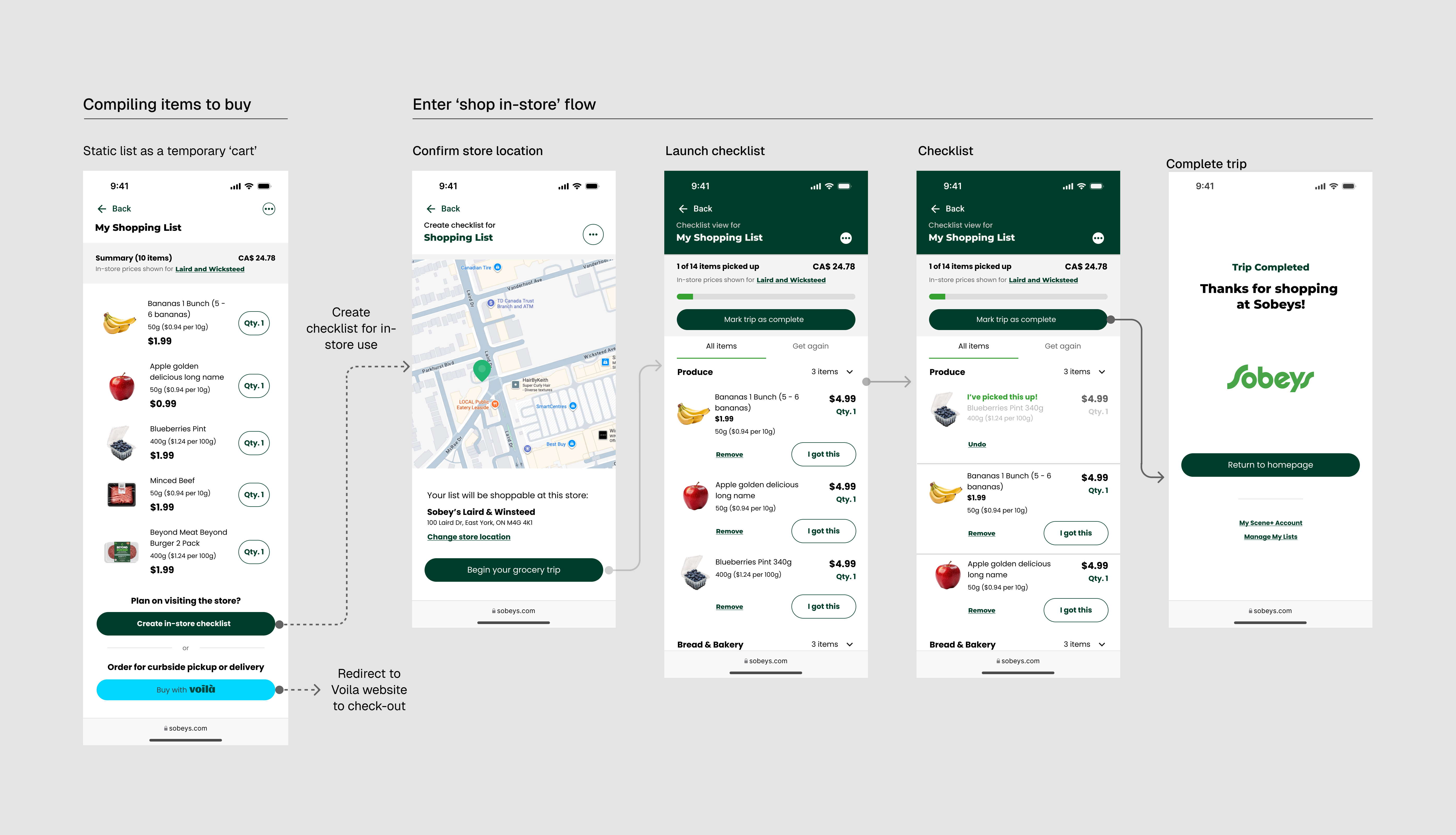
Developing new KPIs for digital success
My designs enabled Sobeys to evaluate the success of digital transformations to their website—critical until e-commerce capabilities are implemented to track checkout sales data.
The list feature itself contributed to a broader digital transformation initiative with a projected 23% growth in revenue over the next year.
Reflection
Once a checkout function is implemented, the use of lists will need to evolve to become its own feature. One potential direction is enabling a persistent, global watchlist for essential items, which would offer ongoing value beyond the single-use list model we designed.
During ideation, we explored displaying inventory quantity and aisle locations to help users find products faster. However, the feature was ultimately ruled out due to the lack of available data.


